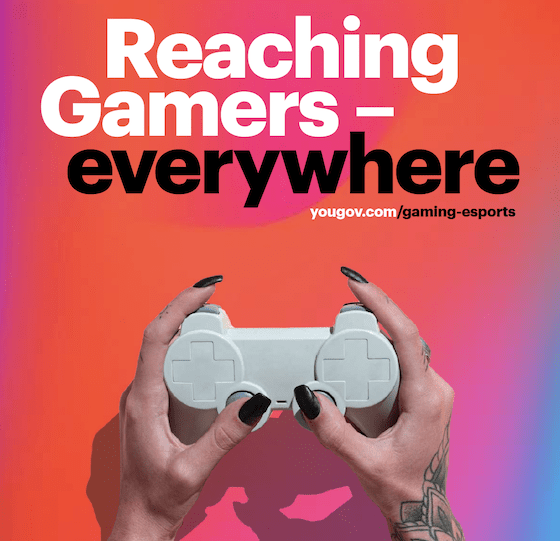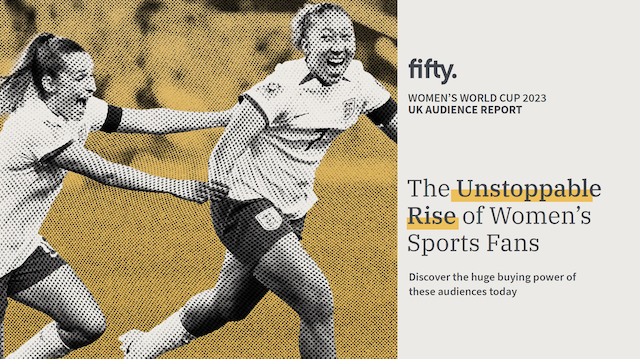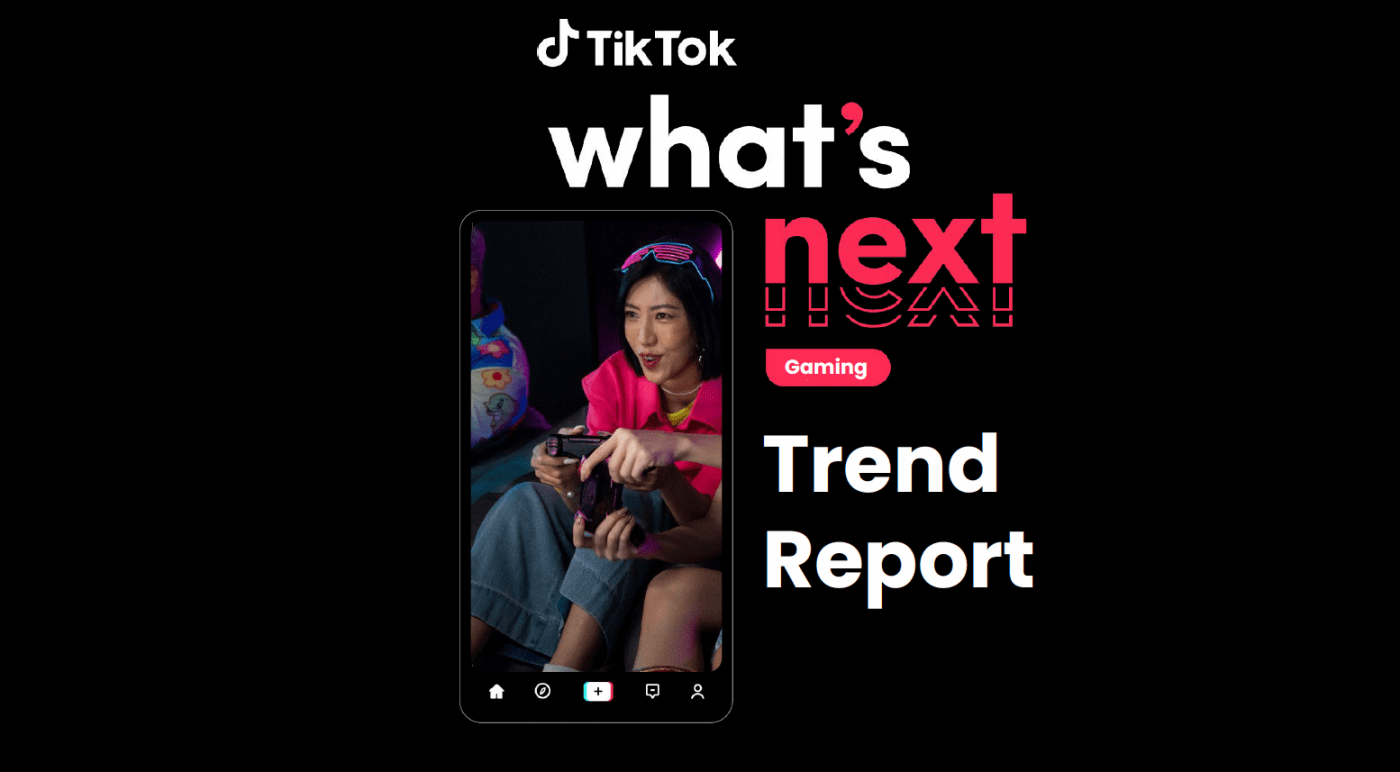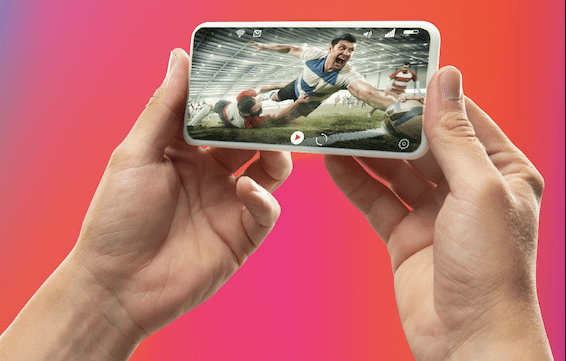The media and entertainment industry is constantly changing with the proliferation of non-traditional and digital media channels. Sponsorship agencies need to understand that the way consumers engage with media and entertainment has evolved, and this report details what that means from a gamer’s point of view. Gaming as a popular pastime has played a critical role in shaping the way audiences interact, engage, and consume content as they engage with games and gaming platforms in more ways than ever before. As the entertainment landscape evolves, understanding gaming’s role in global consumer’s everyday life is crucial for sponsorship agencies to identify where gaming sits in the media mix and explore the best synergies.
What sponsorship agencies need to understand about gaming
YouGov’s report examines the entertainment habits of global consumers and where gaming fits in the entertainment landscape, the types of media activities undertaken and what’s keeping consumers entertained. Engagement with gaming, devices used to game and the impact of advertising platforms on brand and product perception is examined. The relationship gamers have with in-game and out-of-game advertising, how best to connect with gamers and how brands and advertisers can form a deep bond with the highly engaged group is also assessed.
Headlines from the report include:
- Digital media engagement is the most popular weekly entertainment activity – Internet-based activities dominate the current global media/ entertainment landscape. Among all global consumers, visiting websites (64%), social media usage (57%) and watching content on video streaming services such as Netflix (48%) are the top weekly media activities and the top entertainment activities undertaken most often. About a third of the global population (31%) engages in playing video games on a weekly basis
- Gaming ranks highest for under 34s – In terms of global ranking of weekly media activities, gaming ranks 10th overall, jumping to 6th position among global consumers aged under 34 – leaping ahead of print readership, listening to the radio, and watching live, and non-live TV. Among men aged 18-24, weekly gaming moves into the 3rd position, behind broad internet use, and interaction with social media
- Gaming ranks top among men aged 18-24 for media types consumed most often – Globally, gaming is the number one media choice, followed closely by watching non-live video content online, and on social media. In addition, they are more than four times more likely to play video games than watch live TV (31% vs. 7%)
- Gaming is highly engaging – In addition to superior weekly penetration vs. TV among younger demographics, levels of engagement for gaming are also higher. On average, global viewers spend 10.4 hours per week, watching live TV. Whilst this increases to over 13 hours among the over 55s, among TV viewers aged 18-24, this falls to under 6 hours per week. In comparison, 18–24-year-olds spend almost 10 hours per week gaming
- China’s gamers lead the charts on most time spent gaming – China is the biggest market for gaming. Out of the list of twelve media activities, three in ten (29%) Chinese consumers claim to spend most of their time gaming each week. Other Asian markets registering a high proportion of engaged weekly gamers include Hong Kong (23%), Indonesia (19%) and Singapore (18%)
- Mobile drives gaming accessibility – The accessibility of gaming has exploded with the rise of mobile. Enabling ‘anywhere, anytime’ access, smartphones are the top device used for playing video games among weekly gamers (64%) and those who game most often in a week (63%)
- Seven in ten female gamers play video games on their smartphones – hardcore gaming remains male-dominated, dedicated, higher power devices such as desktops/laptops, consoles and high-end gaming PCs are used more by men than women. 28% of women globally play video games at least once a week, and with the growth in mobile gaming, we are likely to see gaming penetration among women continue to grow in the coming years
- Indonesia houses the highest proportion of smartphone gamers – Affordability coupled with continuous tech improvement make smartphones a go-to gaming device in younger, mobile-first Asian markets with Indonesia and India registering the highest proportion of smartphone weekly gamers. Whilst China and India are the two leading gaming markets for desktop/laptop gamers, higher proportions of console weekly gamers are from North America and Europe. Notably, Great Britain has the highest percentage of users, with an almost equal proportion playing video games on consoles (48%) as those who use smartphones (49%).
- Impact of advertising platforms on perceptions of products and services – social media is the top ad platform to drive positive product perceptions among global weekly gamers (31%). Whilst social media ranks as one of the top advertising platforms amongst younger weekly gamers aged 18-24, advertising on video games is third, and fifth among 25-34-year-old weekly gamers, highlighting the deep engagement with this audience
- Gamers have a deeper connection with brands and advertisers – Whilst 45% of all global adults would prefer a deeper, more meaningful connection with brands rather than a fleeting one, this increases to 50% among those who are gaming more than an hour a week
- Gamers want to be inspired and entertained – two-thirds of global weekly gamers want brands to find innovative ways to market themselves and their products. 56% also expect adverts to entertain them, compared to 51% of the global population
- The gaming ecosystem goes beyond just gaming with the social interaction of gaming as important for many gamers – brands should align themselves with streamers and influencers as ambassadors of their brands as a third of gamers globally (32%) trust products recommended by celebrities and influencers
- Gamers have diverse interests – the most popular topics that weekly gamers would click on if they popped up on their news include news (42%) food and drink (34%), music (33%), science (32%), travel and holidays (31%) and computers and technology (30%). They are considerably more likely than the global total to engage with music, sports, science, computers and technology, esports and video games on their newsfeeds
- Different interests for different gamers – The demographics of gamers are more diverse today – comprising more women and adult gamers with varied lifestyles. Driven by their ways of life, gamers are interested in a wide range of topics apart from video games. To effectively connect with gamers, brands need to identify and understand the specific gaming audiences and the nuances between gamers of different demographics
- High engagement with gaming content – On average, global viewers spend 4.8 hours per week, watching gaming video content. This increases to 6 hours per week amongst men aged 18-24 and men aged 25-34, and over 5 hours amongst under 34’s. This shows a highly captive and receptive audience opportunity for brands and advertisers to align themselves with
- Gaming enhances media reach – Adding gaming to traditional media can provide incremental reach. For example, 40% of the global population listens to the radio on a weekly basis, and this increases to 58% of those who either listen to the radio or play games on a weekly basis (+18% uplift). So, an advertiser, including gaming on a media plan, can extend the brand reach of a campaign
Download the report detailing what sponsorship agencies need to know about gamers, here.
Looking for sponsorship agencies to work with?
If you’re looking for advice from sports agencies, Strive Sponsorship can help. Contact us for sponsorship, commercial, content, media, operations, investment, and communications consultancy services.
Frequently asked questions
What does a sponsorship agency do?
Sponsorship agencies can provide a variety of services. Strive Sponsorship advises on sports marketing and sponsorship strategy (what and who to sponsor), helps negotiate sponsorship deals, and helps brands leverage sponsorships to maximise return on investment (this may involve PR, events, social media content and activations etc).
How much do sponsorship agencies charge?
Sponsorship agencies tend to bill in one of three ways; i) a day rate which is a set fee for a day of time. This differs by the experience level of the individual/team and the length of time they are engaged for, ii) a project fee is a fixed fee for an agreed set of outcomes/deliverables, iii) a retainer is usually a monthly charge of an extended period. It differs from the day rate by the fact more work is usually delivered each month and there is a set engagement period of normally at least a year. Economies of scale on price are usually given
Who has the biggest sports sponsorship?
Sports sponsorship fees are usually confidential. The Olympics and football World Cup are two of the properties that usually charge some of the highest fees in sponsorship, given the scale of the global audience and the scarcity value. However, Premier League football shirt sponsorships also command extremely high fees due to the regularity of engagement and exposure opportunities and the scale of the audience.














